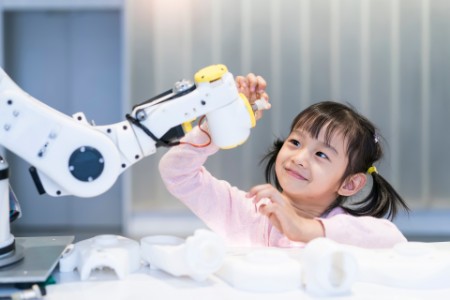We have created artificial intelligence (AI), but will that inevitably lead to machines becoming sentient and our robot overlords?
What could limit the potential of this technology is people’s response to it. AI triggers fear in many people – such as fear over job losses, not understanding how algorithms work or who’s accountable, ethical concerns, or anxiety about an artificial super intelligence that rules the world.
But not everyone. Some people embrace how AI is making our lives better, faster, more convenient. They like predictive recommendations for books, music and movies, and traffic advice on their phones. They’re excited about how AI is transforming industries, for example by helping to detect disease more accurately and encourage healthy behavior.
The biggest difference between these two groups? In my experience, the optimists – by and large – have been in developing economies, and the pessimists in established economies.
What have you got to lose?
When I’m travelling in India and China, for example, there is no fear factor. They’re embracing mobile, digital and AI as fast as products and services emerge. There’s a sense of optimism and opportunity.
In India and China, there is no fear factor. They’re embracing mobile, digital and AI as fast as products and services emerge.
I think there’s two reasons for this: a different mindset and a lack of legacy infrastructure.
China’s willingness to experiment and adopt new products is legendary, for example the five-fold increase in mobile commerce in China in three years, from US$4 trillion in 2014 to US$21.2 trillion in 2017. AI is no exception: the government has ambitious plans to dominate AI and is investing billions, from research and data centers to supporting businesses in piloting and adopting a full portfolio of AI technologies.
Then we have India, the world’s second largest market of smartphone users. Mobile connections are cheap and prevalent. Just look at Aadhaar, the largest biometric ID system in the world with nearly 1.2 billion people registered. People in isolated locations only need a press of their fingerprint on a mobile device to access benefits and government services. In general, Indians perceive AI as a force for good, and its technology-focused workforce is targeting applications on finance and healthcare.
How EY is keeping the human touch in AI
EY is using a range of AI technologies within our business, and we’re finding that the more exposure people have, the less they fear it. Here are three things that we’ve learned from our journey so far:
- Jobs are changing, but that includes job creation. Last year we saved 2.1 million hours by automating repetitive tasks. By automating contract reviews, we were three times faster and better in just 90 days. We’ve also automated capital allowances – something that required time-consuming, complex analysis of documents and databases. We’re freeing people for higher-value tasks and they trust our commitment to them.
Ultimately, automation will eliminate certain tasks – but it will also create jobs in new areas. For example, EY is recruiting more people with skills in data and analytics, AI, design, robotics and other transformative disciplines. - It’s not humans versus machines, it’s humans + machines. We’re using AI to improve our audits; for example, using drones to improve the accuracy and frequency of inventory data collection. We’re using AI with clients across different industries, such as end-to-end claims automation that is faster, more accurate and cheaper. We believe businesses will thrive through the intelligent use of multiple tools and automation approaches – and keeping people in roles that remain uniquely human.
- Every generation needs digital skills. This is an exciting time for the next generation, who will walk into jobs as digital natives. But it’s also an exciting time for the rest of us. EY has introduced a program called Badges, to give our people digital credentials in areas like blockchain, digital visualization, design thinking and AI. We want to prepare everyone for the future of work.
Ultimately, I’m an AI optimist. I think AI is going to lead to more interesting and inspiring careers. It’s one of the most disruptive technologies ever, and I think it’s going to improve our lives.
And as with any technology, there are risks. Could unscrupulous people use AI for harmful purposes? Yes, that’s why we need strong regulation. Will there be job losses? Yes, but jobs are changing and there will be new jobs created as well. Could developers overstep the boundaries of what we consider responsible AI? Yes, that’s why we need a robust ethical framework.
To mitigate this risk, business leaders need to:
- Work with governments and other bodies to develop strong regulation and an ethical framework to monitor and evaluate the use of AI and safeguard customers and society.
- Review the areas of their business most likely to be affected by AI, and where they may need to upskill their employees to take on new tasks or roles.
Instead of fearing it, I would encourage people to learn more about it. There are hundreds of positive ways AI is already making our lives better. Accept that it’s happening, explore what’s possible, and imagine what the future could be like in 20 years. Because that’s also one of the things that set us apart as humans: the power of our imaginations. Come on, imagine something good.
At Innovation Realized 19, from 7-9 April in Boston, EY convenes leaders to further explore how companies can continue to create and deliver value by planning in three dimensions simultaneously: Solve the now. Explore the next. Imagine the beyond. Join the conversation by following #InnovationRealized and visiting ey.com/innovationrealized.
Summary
AI is already having a positive impact, and with the right mindset and regulation in place, it could shape the future for the better.



